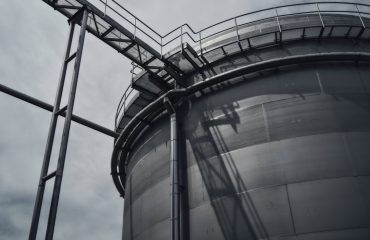The steel industry, a cornerstone of global infrastructure, has traditionally been a significant contributor to greenhouse gas emissions. However, a green steel revolution is underway, driven by the urgent need to reduce our carbon footprint and create a more sustainable future. This post delves into the innovative approaches being adopted to make steel manufacturing significantly more eco-friendly.
1. Reducing Carbon Emissions in Steel Production: The Core Challenge
The primary environmental concern surrounding steel production is its reliance on coal-based blast furnaces. These furnaces generate substantial CO2 emissions during the ironmaking process. The challenge lies in drastically reducing or eliminating this reliance. Several strategies are being pursued:
- Hydrogen-based ironmaking: Replacing coal with hydrogen as a reducing agent in blast furnaces offers a pathway to virtually emission-free steel production. Hydrogen can react with iron ore to produce iron without releasing CO2. However, producing green hydrogen (hydrogen generated using renewable energy sources) is crucial to ensure the overall environmental benefit.
- Carbon Capture, Utilization, and Storage (CCUS): This technology captures CO2 emissions from blast furnaces and either stores them underground or utilizes them in other industrial processes. While not eliminating emissions entirely, CCUS significantly reduces their impact on the atmosphere.
- Electric Arc Furnaces (EAFs): EAFs utilize electricity to melt scrap steel, significantly reducing CO2 emissions compared to blast furnaces. The increased use of EAFs, particularly when powered by renewable energy, is a key element of the green steel transition.
- Improved energy efficiency: Optimizing furnace operations, improving insulation, and implementing advanced process control systems can enhance energy efficiency and reduce overall emissions.
2. Utilizing Recycled Steel: Embracing the Circular Economy
The steel industry is inherently cyclical, with the potential for significant material reuse. Increasing the use of scrap steel in EAFs is a crucial step towards a circular economy for steel. This reduces the need for virgin iron ore, saving energy and lowering emissions. Strategies include:
- Improved scrap collection and sorting: Efficient systems for collecting and sorting scrap steel are vital to ensure its quality and suitability for EAFs.
- Developing new steel grades from recycled materials: Research is ongoing to develop steel grades with comparable properties to those made from virgin materials, using recycled steel as the primary feedstock.
- Promoting the use of recycled steel in construction and other industries: Raising awareness about the environmental benefits of using recycled steel can drive demand and stimulate the circular economy.
3. Sustainable Sourcing of Raw Materials: Minimizing Environmental Impact
The environmental impact of steel production extends beyond the manufacturing process itself. Sustainable sourcing of raw materials, such as iron ore and coal, is crucial. This involves:
- Minimizing mining impacts: Implementing responsible mining practices, including minimizing land disturbance, water pollution, and biodiversity loss.
- Using lower-carbon coal sources: If coal is still used in the interim, prioritizing coal sources with lower carbon intensity.
- Exploring alternative raw materials: Investigating the potential of alternative raw materials, such as direct reduced iron (DRI) made from renewable energy sources.
4. Technological Advancements in Green Steel Manufacturing: Innovation as a Driver
Continuous innovation is driving the green steel revolution. Several technological advancements are crucial:
- Artificial intelligence (AI) and machine learning (ML): AI and ML can optimize steelmaking processes, improving energy efficiency and reducing emissions.
- Advanced process control systems: These systems can enhance the precision and efficiency of steelmaking operations.
- Development of new alloys and steel grades: Research into new steel alloys and grades with improved properties and lower environmental impact.
5. Policy and Regulatory Frameworks: Supporting the Transition to Green Steel
Government policies and regulations play a vital role in accelerating the transition to green steel. This includes:
- Carbon pricing mechanisms: Implementing carbon taxes or emissions trading schemes to incentivize emission reductions.
- Subsidies and incentives for green steel technologies: Providing financial support for research, development, and deployment of green steel technologies.
- Setting ambitious emission reduction targets: Establishing clear and ambitious targets for the steel industry to reduce its greenhouse gas emissions.
- Promoting sustainable procurement policies: Encouraging government and private sector organizations to prioritize the use of green steel in their projects.
The transition to eco-friendly steel manufacturing is a complex and challenging undertaking, but it is essential for mitigating climate change and building a sustainable future. By embracing innovative technologies, promoting circular economy principles, and implementing supportive policies, we can pave the way for a greener and more sustainable steel industry.
Tags: Green Steel, Sustainable Steel, Eco-Friendly Steel Manufacturing, Carbon Neutral Steel, Circular Economy Steel




